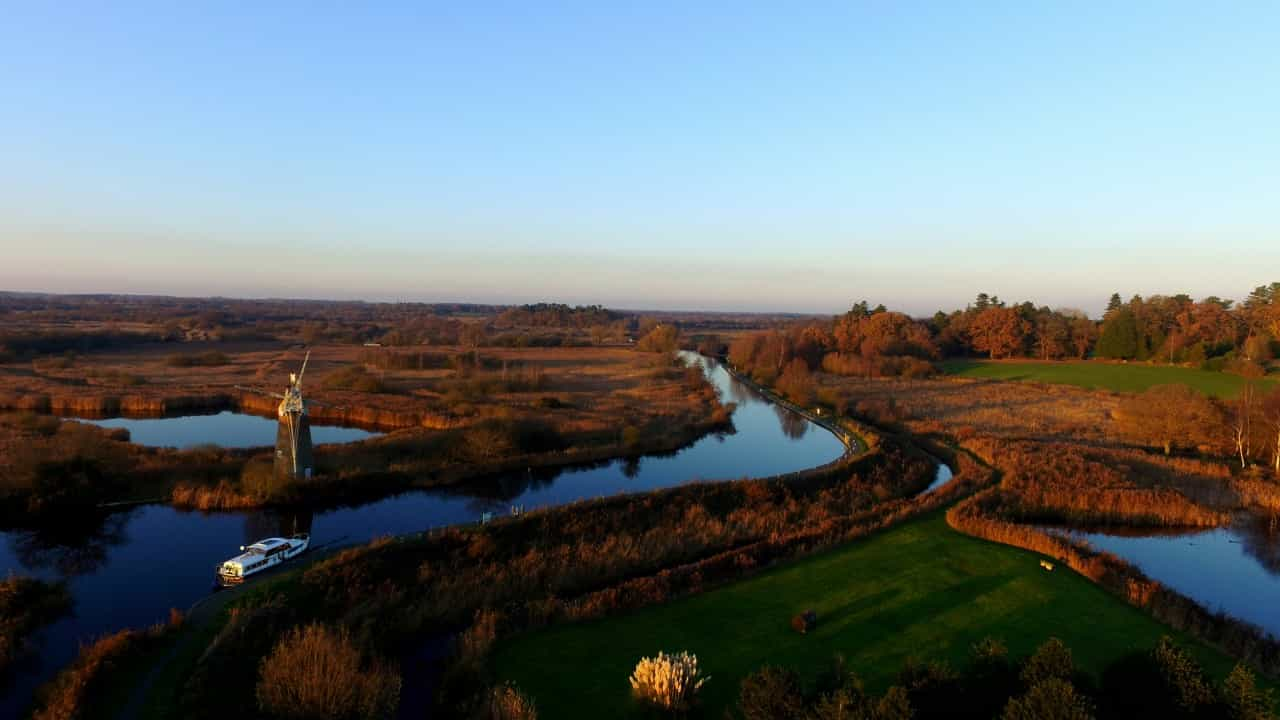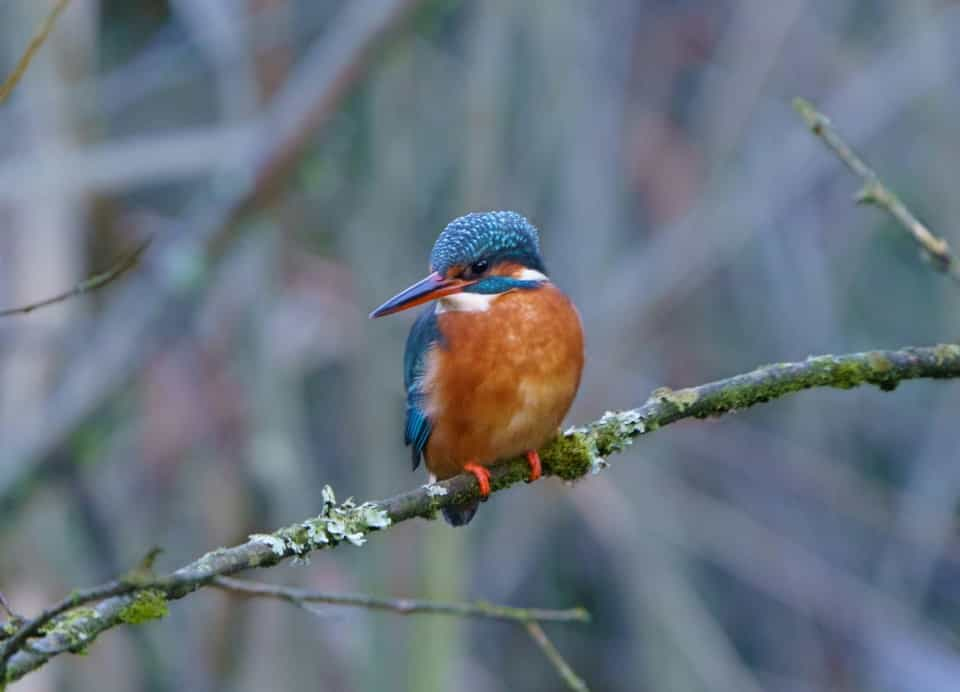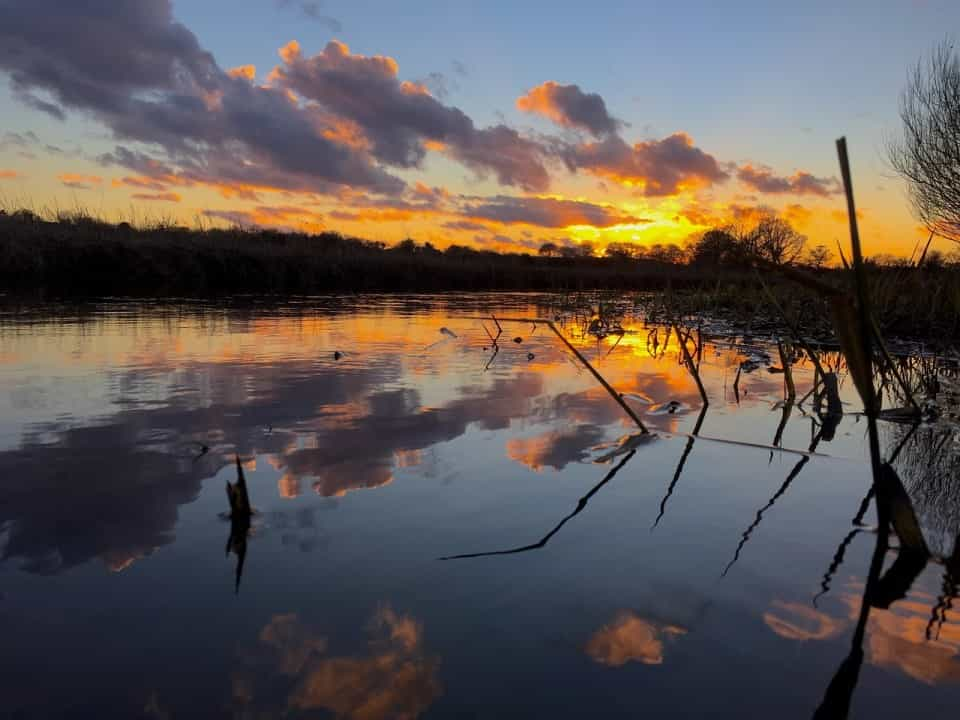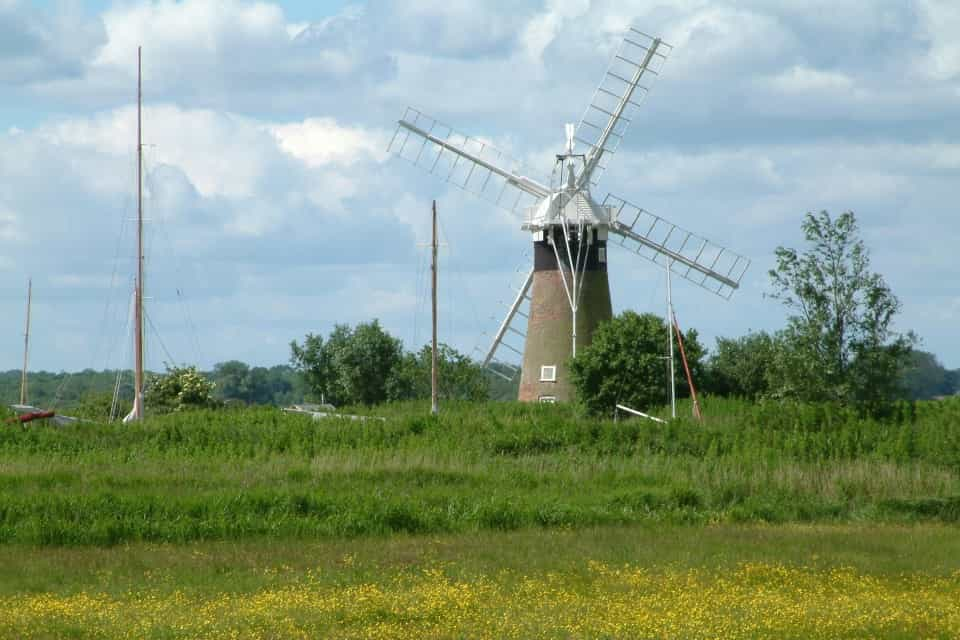The Broads Hidden Gems

The enduring beauty of the Broads National Park is no secret, and around 7 million visitors flock here every year, drawn by the chance to explore the park’s extensive network of waterways and delightful rural landscape. But, of course, for many a holiday also represents the chance to ‘get away from it all’. Our pick of the Broads' hidden gems highlights some of the region’s less-frequented pleasures, peaceful spots away from the crowds where a sense of solitude and the delight in discovering something unusual are part of the appeal.
Read on to uncover our pick of nature reserves along the lesser-known Broads, some quiet villages to explore, and a couple of unique local attractions.
Secluded waterways and nature spots

Surlingham Broad
Peaceful Surlingham Broad is a lesser-known waterway that makes a great choice for birdwatchers and nature lovers, mainly thanks to the RSPB’s Surlingham Church Marsh reserve. There’s a mooring nearby, and a gentle circular walk (1.5 miles/2.5 kilometres) provides the opportunity to spot local wildlife among the willow trees, reeds and marshes,
In spring and summer here, look out for kingfishers, warblers and marsh harriers from the bird hide on site. Abundant insects also attract rare dragonflies and butterflies fluttering among a plethora of colourful wildflowers. In winter the site often floods, making it an ideal environment for shovelers, gadwalls and bitterns.
Hickling Broad's quiet corners
Hickling is the largest of the Broads, but if you venture out into its quieter sections you stand a good chance of seeing cranes, bitterns, marsh harriers, merlins and barn owls, plus otters and kingfishers if you’re lucky.
It’s easy to explore the trails of the nature reserve here on foot. If you’d like to get out on the water, try hiring a small boat. Or get in touch with the helpful folks at the Norfolk Wildlife Trust, who run guided trips in 12-seater boats in summer, and will also take you to their 60-foot (18-metre) viewing tower.

Undiscovered villages and cultural spots
Ludham
With thatched, whitewashed cottages, a 14th-century church, a pub and a tearoom, the peaceful riverside village of Ludham typifies the pastoral appeal of the Broads lifestyle.
Handsome St Catherine's Church, a legacy of the period when the agricultural ‘Good Lands’ here brought prosperity to the region, is well worth a visit. Wander inside beneath the soaring oak hammer beam roof to admire the elaborate rood screen with 12 well-preserved painted figures (dating from 1493), an ornately carved font and the grotesque carvings on the chancel arch. Look out for our favourite, the ‘projecting hand’ on the right-hand wall, an unassuming yet pleasingly bizarre feature thought to be have been added for holding a bell rope or a candle.
On a gentle mile-long stroll outside the village, Ludham Bridge crosses the River Ant, and is a fine spot to watch passing boats, or take off along a choice of footpaths. We’d definitely recommend the walk to ruined St Benet’s Abbey, or the iconic Turf Fen drainage mill.
Reedham
Reedham, on the River Yare, is our pick for a walk or cycle ride, and has plenty of moorings for boats.
A stroll along the attractive riverside path here takes you to one of just a few remaining chain ferries in the country (and the only one in Norfolk), which still takes pedestrians and cars across the river, saving a 30-mile (48-kilometre) round trip. At the opposite end of the village, an early 20th-century swing bridge carries the Norwich to Great Yarmouth railway line, and still opens more than a thousand times a year to allow boats to pass.
If you want to stretch your legs, you can also join the long-distance Wherryman’s Way, which leads downstream to the restored Polkey’s Mill, another fine example of the park’s famous windpumps – it's only accessible on foot or by boat.
Afterwards, relax and reward yourself for your efforts with a pint and a bite to eat in a choice of pubs by the water. You might even get to see the bridge and ferry in action.

Unique local attractions
Thurne Windpump
Assumed to be windmills by most of us, the Broads’ iconic windpumps were instrumental over time in helping to drain the land around them for farming.
Originally built in 1820 and restored around 1950 after falling into disrepair, the beautiful example beside the river at Thurne is less well known than some of its compatriots. A deservedly popular focus for pictures, it has also made several TV appearances.
You can admire it from the outside at any time, but if you’d like to get up close and discover exhibits about its history, it’s usually open on selected Sundays from May to September (please check before visiting).
Neatishead Radar Museum
Our pick for curious historians, Neatishead Radar Museum is a former RAF facility that explores the importance of Britain’s air defences from World War II to the Cold War.
Dotted with models and mannequins in RAF uniform, the station is home to a cornucopia of historical artefacts including a wealth of fascinating radio and communications equipment, original charts and maps. Kids relish the chance to get hands on with many of the exhibits, donning headphones, shuffling map markers or sitting at the pilot’s seat in original Jaguar and Tornado cockpits.
Travel back in time through more than 20 exhibition rooms, including the Cold War Room and the ominously named Nuclear Reporting Cell. Well-informed volunteers are happy to fill you in on the station’s history, and occasional talks are announced throughout the day over the tannoy.
Tips for exploring hidden gems
Best times to visit
If you prefer a more peaceful experience, plan your visit to avoid the busiest times:
-
Try visiting during quieter spring and autumn seasons
-
Arrive at the beginning or end of the day (but leave enough time to enjoy everything)
-
Choose weekdays rather than weekends
-
Avoid school or public holidays
-
In the case of sites with no indoor element, try picking a pleasant day in winter
-
Remember to check opening times before you travel
What to bring
Many of our suggestions involve expeditions into the great outdoors. To make the most of your outdoor time and ensure that the weather doesn’t put a dampener on your fun, you'll need to carry (or wear) some or all of these:
-
Comfortable footwear – well-worn walking boots are ideal, and wellington boots are a good option in the traditionally marshy Broads countryside
-
A good-quality waterproof jacket and trousers (just in case)
-
Sun cream and a hat
-
A pair of binoculars for wildlife observation
-
A camera
-
A fully charged mobile phone – handy for casual photography, and as a navigation aid
-
Snacks and plenty of water
-
A small, comfortable rucksack that leaves your hands free
We hope we’ve encouraged you to get out there and discover some of the lesser-known secrets of the Broads National Park. If you love life under canvas, choose your favourite place to stay from the best campsites in and around the Broads.
Visiting at quieter times or having a place to yourself always makes a trip special. Please always remember to leave no trace – follow the Countryside Code, take your rubbish home with you, and maintain respect for local people, wildlife and the environment.